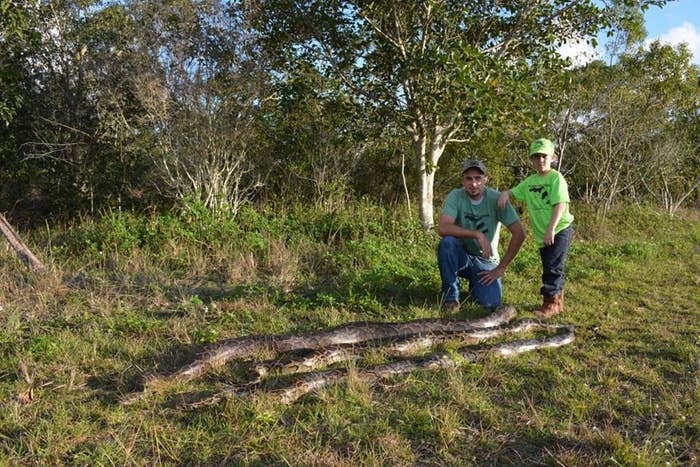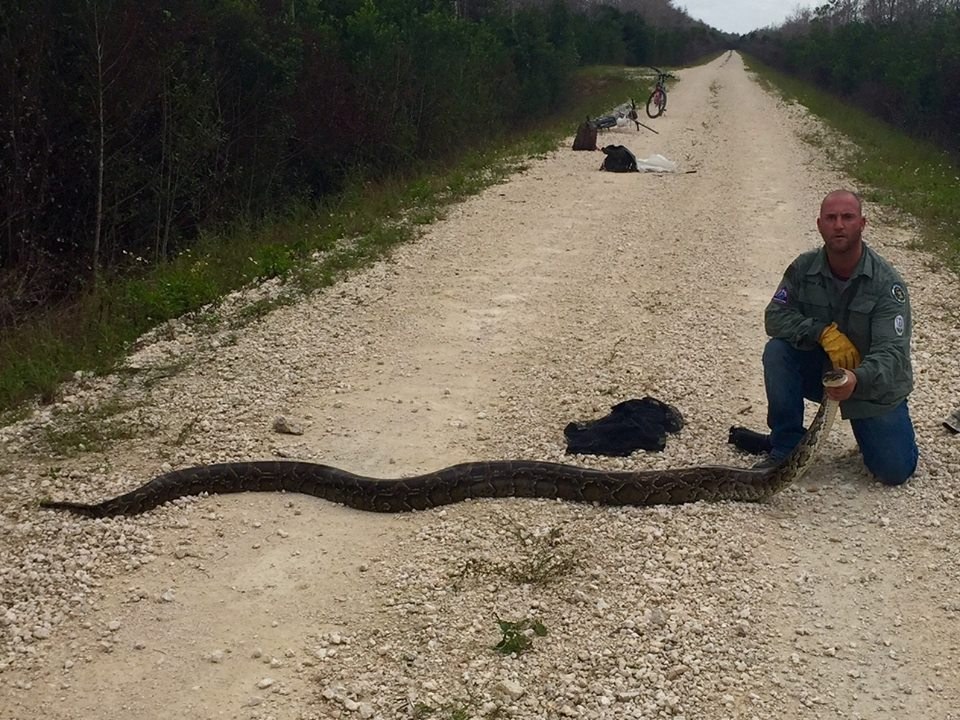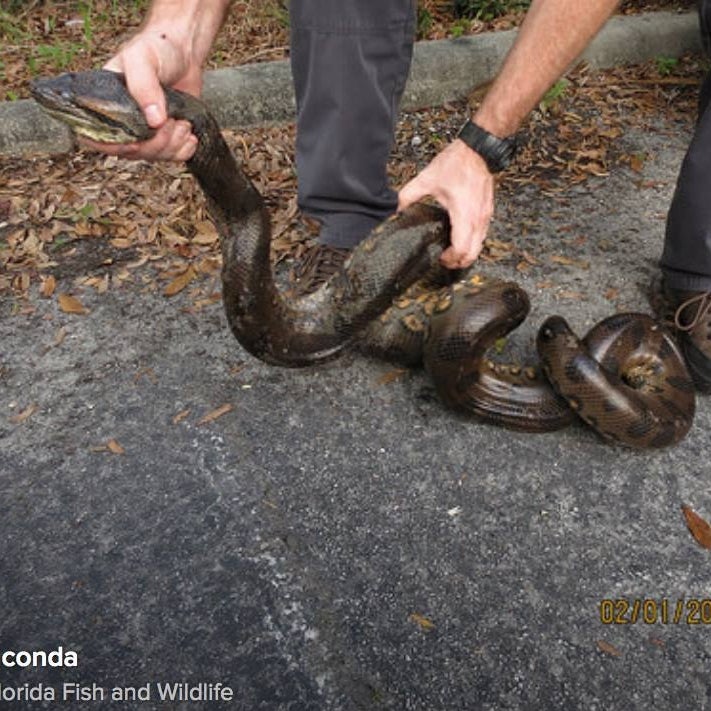More than 600 snake hunters migrated down to the Everglades in January to compete in Florida's month-long Python Challenge.

Teams of families, lovers, and friends spent their Valentine's Day finishing up the snake killing challenge.
In total, 102 Pythons were captured and killed by the 14th – far more than the 68 killed in the first and only other competition in 2013.
The team that killed the most – or the longest – pythons, will win up to $16,000 cash prizes, to be awarded in a ceremony at the end of February.

The challenge began in 2013 when the Florida's Fish and Wildlife Conservation Commission realized that the tens of thousands of Burmese pythons slithering through their state's subtropical wilderness were beginning to threaten the existence of other native mammals.
The population of foxes, raccoons, rabbits, and even the famous Florida panthers, were at risk of decreasing past the point of recovery, the website for the event says.
The commission decided to deal with the overpopulation crisis by inviting teams of human snake hunters to compete in a python-killing spree for money.

The serpents are quick-moving and camouflage well, making them difficult to find. And once you do — at up to 26 feet and 200 pounds — they can be pretty hard to fight as well.
"This is the hardest thing that anybody's going to hunt," serpent slayer Dusty Crum told NBC News. "It's a 2-foot needle in a 100 million-acre haystack."
Abnormally cool weather has lured the cold-blooded creatures out from their usual hiding holes, making it easier for the huntsmen to track down the slippery snakes. A python met its maker within the first few hours of the competition – a rare and surprising accomplishment, Crum said.


Though the competition is partially sponsored by a hunting knife company, hunters are encouraged to use firearms to shoot the pythons and not knives.
PETA asked hunters not to hack the creatures' heads off, which the animal rights group says often causes the snakes to "writhe in agony for hours if their brains are not immediately destroyed."
The pythons originated from Southeast Asia, but were first seen in Florida in the 1980s.
Researchers believe that many of the snakes escaped from a reptile-breeding facility in the Everglades after it was damaged in Hurricane Andrew in 1992.
Another theory is that lazy exotic pet owners dumped the snakes in the wild around the same time. As female pythons are able to produce up to 100 eggs at a time, the reptiles were able to multiply quickly.

